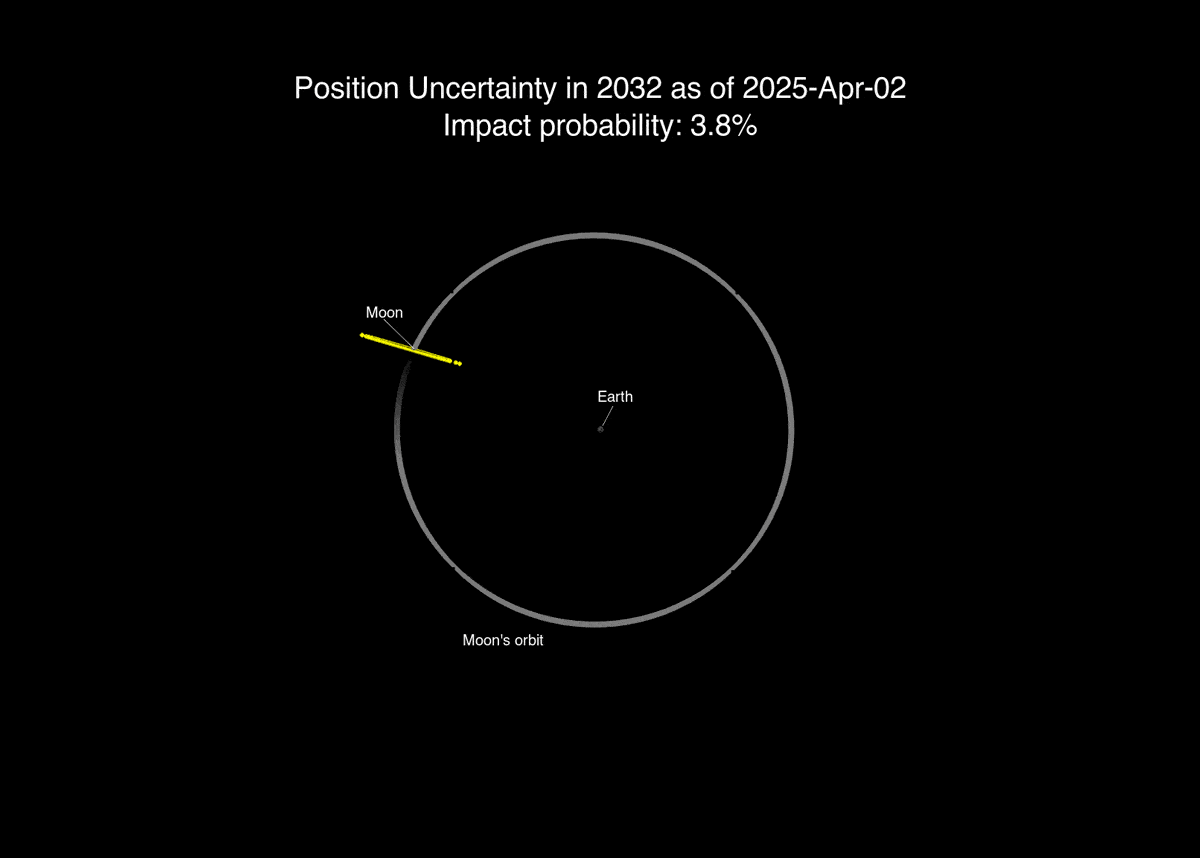Asteroid 2024 YR4, once considered the highest impact risk to Earth ever recorded, is back in the spotlight — this time due to a slight increase in the chance that it could impact the moon in 2032.
Although now too distant to observe from Earth, the asteroid briefly came into view in May for the James Webb Space Telescope (JWST). Using data from the telescope's Near-Infrared Camera, a team led by Andy Rivkin of the Johns Hopkins Applied Physics Laboratory refined predictions of where 2024 YR4 will be on Dec. 22, 2032 by nearly 20%. That revised trajectory nudged the odds of a lunar impact from 3.8% to 4.3%, according to a NASA update.
"As data comes in, it is normal for the impact probability to evolve," the statement read. Even if a collision occurs, "it would not alter the moon's orbit."
Astronomer Pawan Kumar, a former researcher at the Indian Institute of Astrophysics in Bengaluru, agrees the moon is safe, noting a collision with the moon "won't be a cause for concern" because any moon debris blasted into space from the impact "blow up in Earth's atmosphere if any of it makes it to near-Earth space."
First detected on Dec. 27 last year, 2024 YR4 is estimated to be about 174 to 220 feet long (53 to 67 meters), or about the size of a 10-story building. The asteroid quickly grabbed headlines for having more than a 1% chance of striking Earth, the highest recorded for any large asteroid. Follow-up observations in January and February saw the impact risk climb from 1.2% to a peak of 3.1%.

The asteroid's projected trajectory at the time suggested it could cause blast damage across a wide potential impact zone, spanning the eastern Pacific, northern South America, Africa and southern Asia. If it enters Earth's atmosphere over the ocean, NASA estimated it would be unlikely to trigger significant tsunamis, but an airburst over a populated city could shatter windows and cause minor structural damage.
However, the impact risk dropped sharply as additional orbital data came in. By Feb. 19, the probability had fallen to 1.5%, and then to 0.3% the next day. On Feb. 24, NASA announced an official "all clear" on social media, reporting the impact probability had dropped to just 0.004% and that the asteroid is "expected to safely pass by Earth in 2032."
Further analysis has since allowed scientists to rule out any risk to Earth, not only in 2032 but from all future close approaches as well. Data from telescopes in Chile and Hawaii recently suggested the space rock originated in the central main belt between Mars and Jupiter and gradually shifted into a near-Earth orbit.

Since mid-April, the asteroid has been too far away and too faint to be seen from Earth. It will swing back into view in 2028, giving scientists another chance to observe the asteroid and further refine its orbit using both JWST and ground-based telescopes. In particular, scientists will aim to gather more data on its shape and composition, which are key factors in understanding both its behavior and potential impact effects.
While 2024 YR4 no longer poses any danger, it provided scientists with a rare, real-world opportunity to rehearse the full scope of planetary defense strategy, ranging from initial detection and risk analysis to public messaging. It was "an actual end-to-end exercise" for how we might respond to a potentially hazardous asteroid in the future, said Kumar.
"2024 YR4 is a tailor-made asteroid for planetary defense efforts," he said. "It has everything it takes to get our attention."










 English (US) ·
English (US) ·